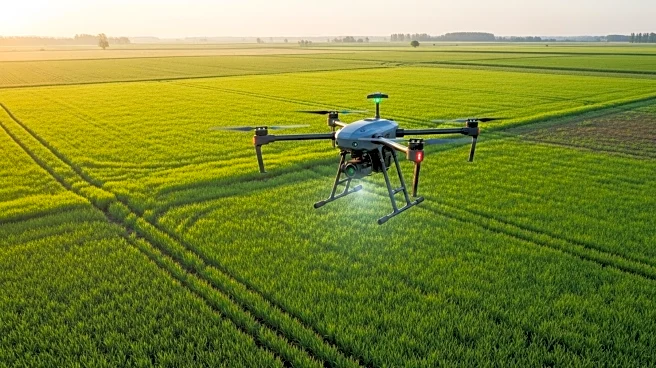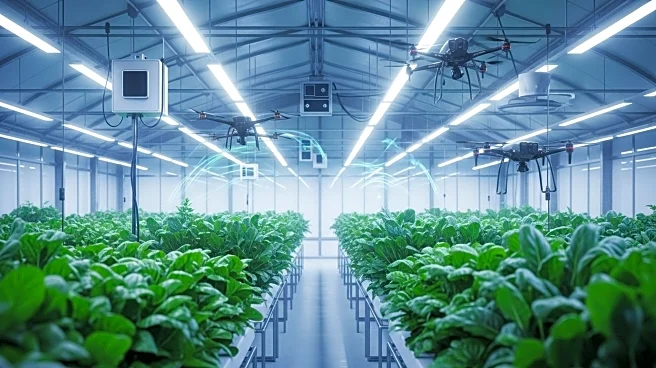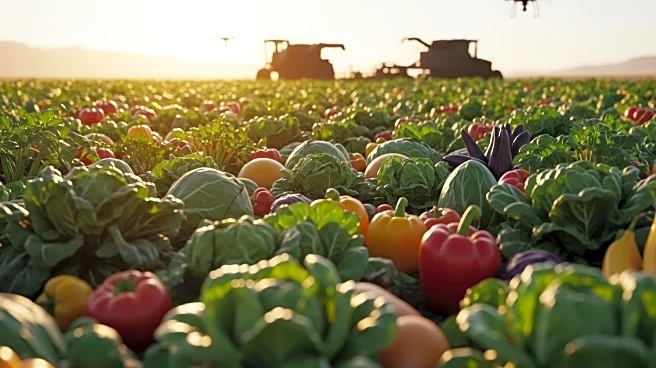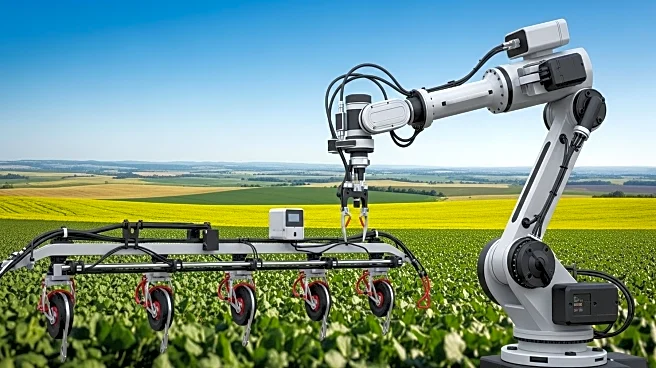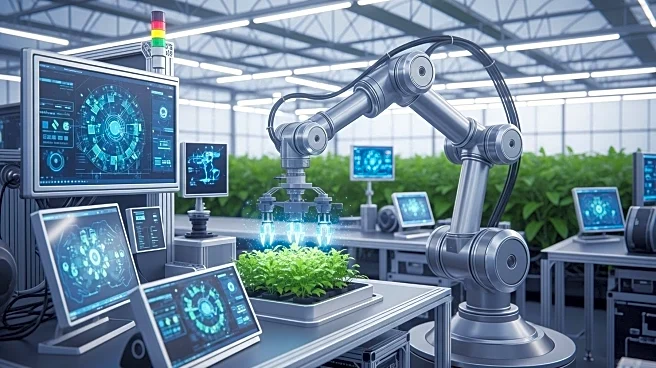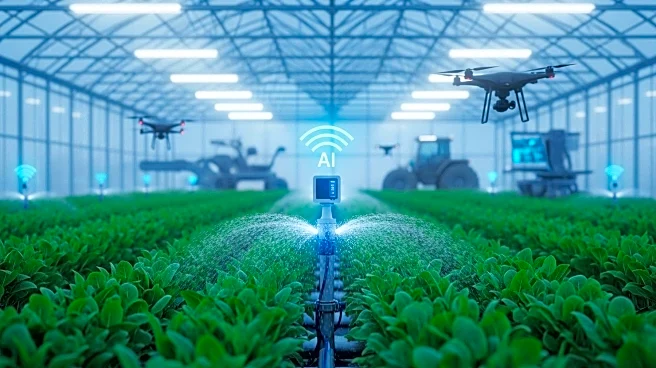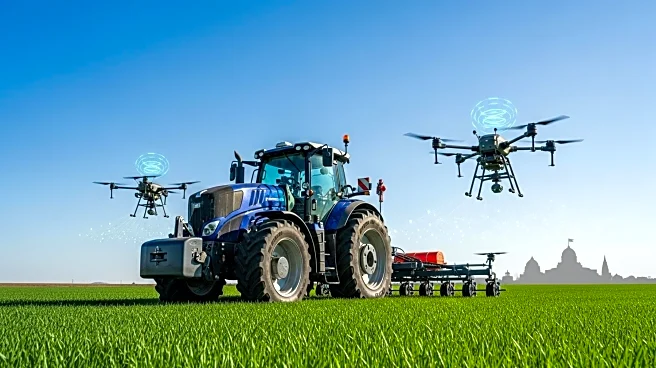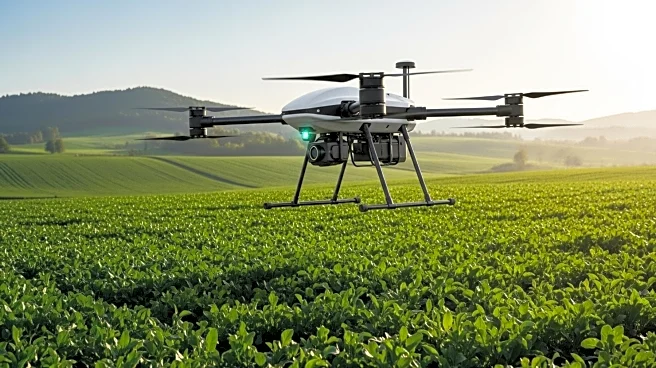What's Happening?
The United States agriculture sector is witnessing a significant shift towards the adoption of Variable Rate Technology (VRT), as highlighted in a recent report by DataM Intelligence. This technology allows for precise application of inputs such as fertilizers, seeds, and chemicals, tailored to the specific needs of different areas within a field. The report outlines the market's growth trajectory, driven by key players like Deere & Co, CNH Industrial NV, and AGCO Corporation. The adoption of VRT is expected to accelerate between 2025 and 2032, with North America leading the market. The technology is segmented into various product types, including Fertilizer VRT, Seeding VRT, and Chemical VRT, and is applicable across different crop types and farm sizes.
Why It's Important?
The increasing adoption of Variable Rate Technology in agriculture is crucial for enhancing productivity and sustainability. By optimizing input usage, farmers can reduce costs and environmental impact, while increasing yields. This technological advancement is particularly significant in the context of global food security and climate change challenges. The U.S. agriculture industry stands to benefit from improved efficiency and competitiveness, potentially leading to increased profitability for farmers and agribusinesses. Moreover, the growth of this market could spur innovation and investment in agricultural technologies, further driving economic growth in rural areas.
What's Next?
As the market for Variable Rate Technology continues to expand, stakeholders in the agriculture sector are likely to focus on further innovation and integration of these technologies. Companies may invest in research and development to enhance the capabilities of VRT systems, making them more accessible and cost-effective for farmers. Additionally, there may be increased collaboration between technology providers and agricultural producers to tailor solutions to specific regional needs. Policymakers could also play a role in supporting the adoption of VRT through incentives and educational programs aimed at promoting sustainable farming practices.

